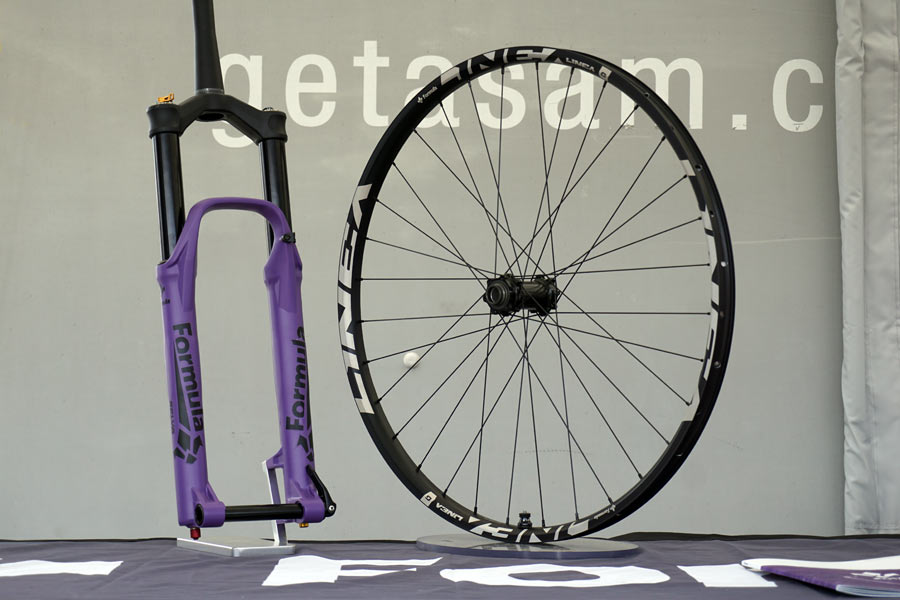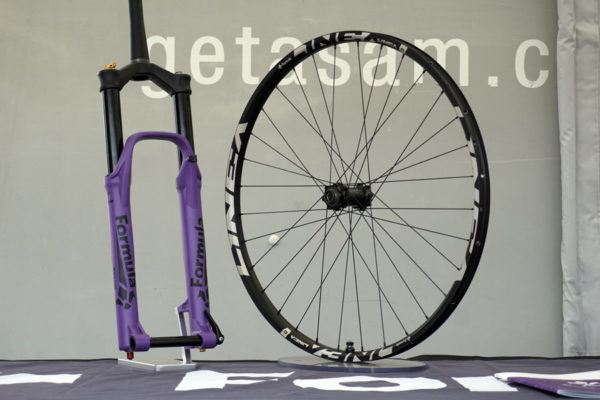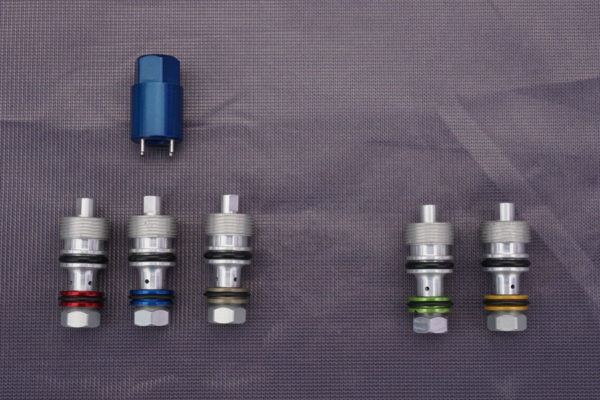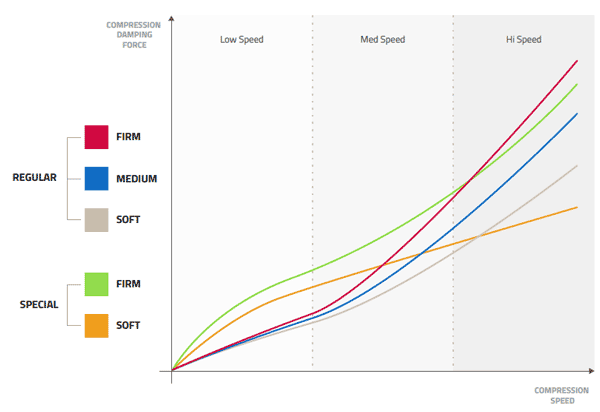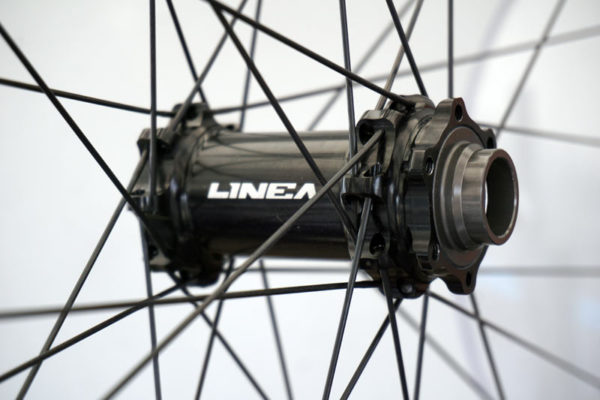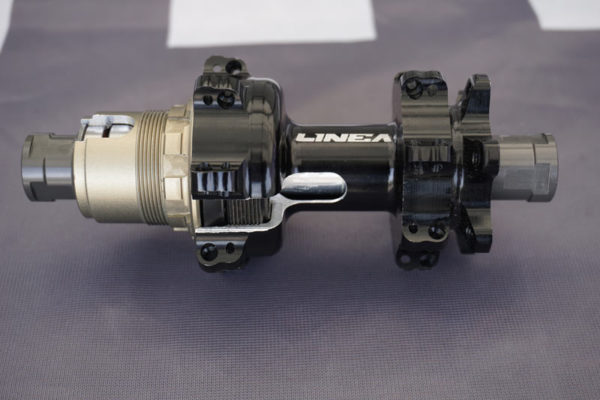Formula is making a bigger push into North America, and their expanded compression and air spring tuning options -not to mention the optional purple lowers- should help them turn a few heads.
Prior to this year, they’ve used 25-50cc oil as the volume adjustment, which allows exact adjustments. Add more oil to reduce volume, or vice versa. Now, they’re developing a chip based system (think Rockshox Tokens), but unique enough that they’re waiting until their patent comes through before telling us anything about it. Why? Branding (“Tokens” are easy to remember) and ease of use for consumers that aren’t comfortable messing with oil. You’re also likely to see a few changes to the air spring side later this year…as in, likely an all-new negative spring design. But the most interesting new bit are the additional CTS inserts…
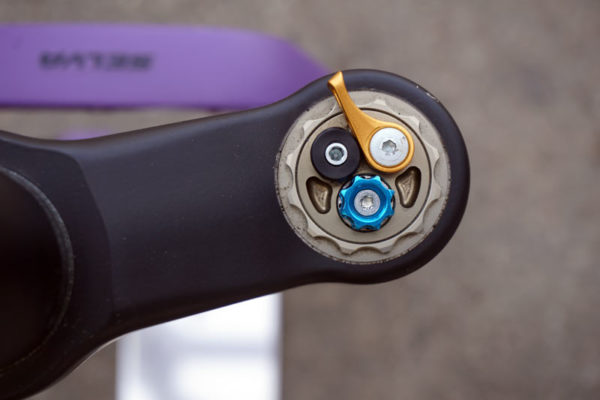
Last year, Formula introduced the CTS (compression tuning system) inserts. Different than volume spacers, these are the flow ports that directly affect the shim stacks for the compression circuit. Think of it as your pro tune that would otherwise be reserved for top athletes. These give you the ability to tune your compression settings with as much detail as World Cup pros get from team mechanics or by sending your fork off for aftermarket tuning. The benefit? Well, first, you can do it yourself. And it’s as simple and cheap as buying new valves for about $58 each, or $100 for a kit with one valve and the blue tool needed to remove and install them.
The original three are on the left – red (firm), blue (medium) and gray (soft). The new ones -green (Special firm) and gold (Special soft)- push the compression ports to the extreme ends of the spectrum, but it’s how you can use them that might surprise you. First, it’s worth noting that the changes between them are more than just the number of holes. It’s the shape of the holes, how much of them are exposed, and the shaping of the internal channels.
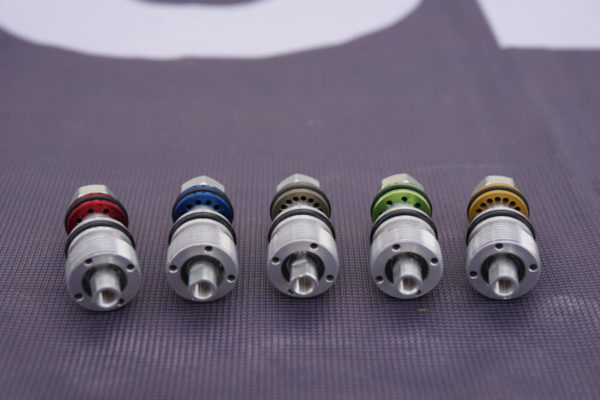
The regular CTS units leave the low speed compression nearly the same for all three, then changing the ramp in medium and high speed ranges. The Special versions have a more pronounced effect on the low speed compression damping, leaving you more freedom to tune the medium and high speed hits with air pressure and volume.
It’s easy to think of this simply, like using the softer valve for lighter riders. But there’s so much more to it than that when you combine changes to the air volume and air pressure, you can really fine tune performance to make it feel however you want in all three -slow, medium, fast- compression speed ranges. For example, a really aggressive enduro rider could use the Special Firm (green) to keep the fork from blowing through the travel on the small hits and staying a little higher in its travel, without making it overly harsh on big hits since the ramp is similar to the standard Firm valve with high speed hits.
Or, a lightweight XC racer could use the Special Soft (gold) to help keep the fork firmer for low speed movements like sprinting or out of the saddle climbing, but let it stay soft on bigger hits and allow them to utilize all of the travel. Changing them out takes just a few minutes and could even be done trail side, letting you tune the fork to particular rides.
The CTS valves are used on all three of Formula’s forks – 33, 35 and Selva. Here’s how they break down
- 33 – 33mm stanchions, 100 to 130mm travel.
- 35 – 35mm stanchions, 120 to 180mm travel, but recommended for 140mm and up.
- Selva – Boost version of 35 with extra material in the lowers to balance the rigidity against the bigger tires. Also available with a 20mm thru axle.
Not familiar with Formula’s tech? They’ve got a lot more going on than just tunable compression, like IFT pistons to reduce binding friction. Check more out in this post.
The Linea wheel lineup was introduced last August, and now they’re getting more aggressive with a hoop set to match the Selva’s capabilities. The new Linea G (for Gravity) are their premium alloy enduro race wheels that come in around $1,000. And before we could even ask, they answered the question “Why are their wheels so expensive?”
Because they’ve been doing motorcycle hubs since the ’70s. And their hubs are 100% designed, machined and assembled in Italy with (they say) the same care and attention to detail as a Chris King or I9 hub. Thinking that way, the $1,000 price point makes sense because it’s about what you’d end up paying for a handbuilt set of wheels using either of those hubs. But, there’s something special about Formula’s hubs that the others don’t have.
They’ve pushed the bearings out about 3cm wider than most hubs, putting the drive side bearing halfway under the freehub body (94mm apart, to be exact). That bearing is a wider, stronger needle bearing, too, which makes the whole system even stiffer.
They’ll come laced with 32 spokes, and it’ll only be avaialble with a 20mm thru axle, with standard and Boost spacing. Yes, Boost 20mm thru axles, because their Selva fork offers it, 29er downhill forks are coming, and they just might have a new fork on the market to fit that by year’s end.
The rim on the wheels shown were not production and will change significantly, so they didn’t want closeup pics. But, they say they put a lot of effort into making the aluminum rim up to the task, saying if you’re able to dent it, you’re pushing things really, really hard. And good for you. Look for them to hit the market this summer.
